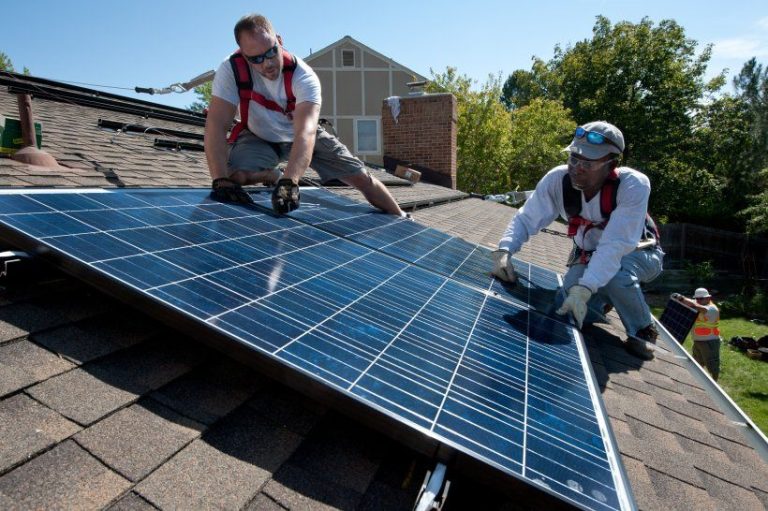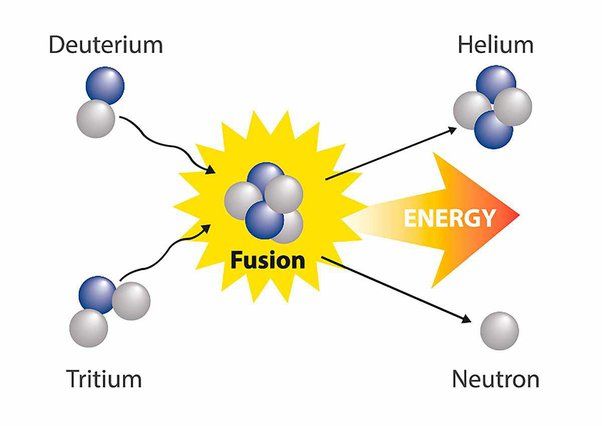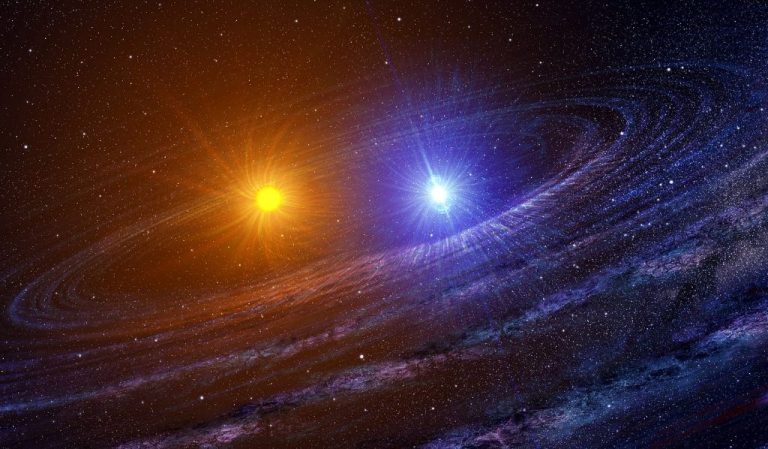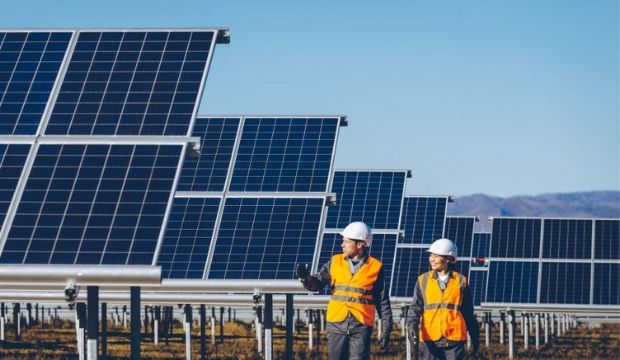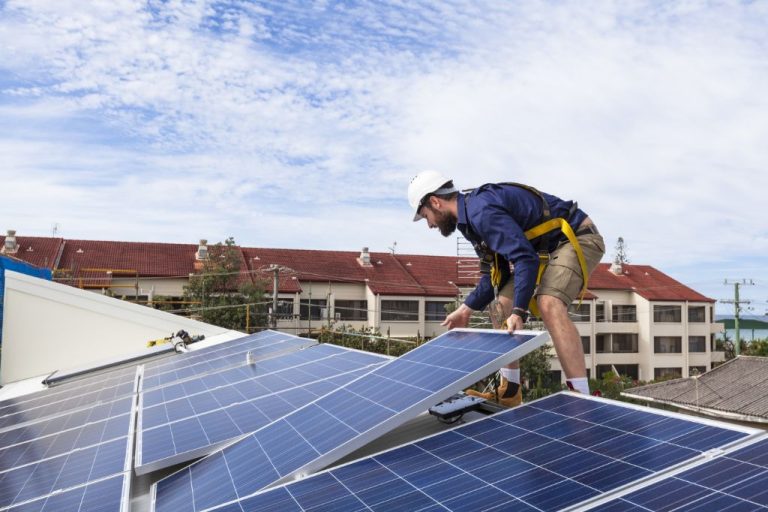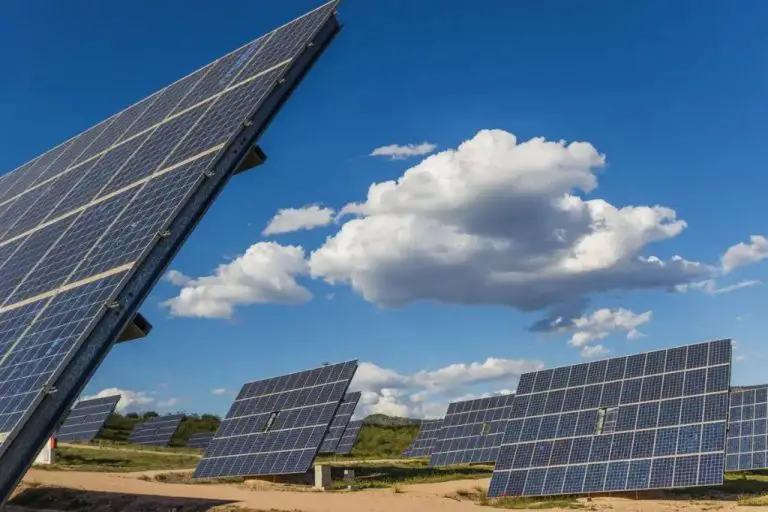Does Solar Energy Have A Chemical Reaction?
Solar energy is the radiant light and heat that comes from the sun. It is considered a renewable energy source, as the sun will continue emitting solar radiation for billions of years. The goal of this article is to analyze whether solar energy utilizes chemical reactions to produce electricity or heat. We will examine how solar panels and solar thermal systems work to determine if any chemical processes are involved. The short answer is that while solar energy itself does not rely on chemical reactions, some related solar technologies do require chemistry to function.
How Solar Panels Work
Solar panels work through the photovoltaic effect, which is a process that converts sunlight directly into electricity. Solar cells inside the panels are made up of semiconductor materials like silicon that are specially treated to form an electric field. When sunlight hits the solar cells, the photons from the sunlight knock electrons loose in the semiconductor material, causing them to flow and generate an electrical current.
Silicon is one of the most common materials used in solar cells. It is treated with other elements like phosphorus and boron to form the p-n junction needed to create the electric field. The silicon atoms get excited by sunlight and release electrons, allowing current to flow when the solar cell is connected to an electrical circuit. Other materials like cadmium telluride and copper indium gallium selenide are also used to absorb sunlight and generate electricity.
Solar Thermal Energy
Solar thermal technology uses sunlight to directly heat water or other fluids that can then be used for a variety of applications. Some of the most common types of solar thermal systems include:
Solar Hot Water – Solar hot water systems use solar energy to heat water for domestic use. This is one of the most widely adopted applications of solar thermal technology. Solar collectors, usually mounted on the roof, absorb heat from the sun and transfer it to water which is stored in an insulated tank.
Concentrated Solar Power (CSP) – CSP plants use mirrors or lenses to concentrate a large area of sunlight onto a small area. The concentrated light is converted to heat, which drives a steam turbine to generate electrical power. CSP allows energy to be stored so it can continue generating electricity even when the sun isn’t shining.
Solar thermal systems offer a clean, renewable way to meet hot water and heating needs with minimal environmental impact. Because they don’t rely on any fuel source, their operation produces no greenhouse gas emissions or other pollutants.
Photosynthesis as a Chemical Process
Plants use a complex chemical process called photosynthesis to convert sunlight into chemical energy. During photosynthesis, plants take in carbon dioxide (CO2) and water (H2O) from the environment. Using energy from sunlight, the plant converts these into oxygen (O2) and glucose (C6H12O6). Photosynthesis takes place in chloroplasts, specialized structures in plant cells that contain the green pigment chlorophyll. When sunlight is absorbed by chlorophyll, it starts a series of chemical reactions and electron transfers that store energy in glucose molecules.
The overall chemical reaction for photosynthesis is:
6CO2 + 6H2O + Light Energy → C6H12O6 + 6O2
This chemical process can be divided into two main stages, the light dependent reactions and the light independent reactions. In the light dependent reactions, sunlight provides energy to split water molecules into hydrogen and oxygen. This releases electrons that get transferred to generate ATP and NADPH, energy carriers needed for the next stage. In the light independent reactions, CO2 is fixed into organic molecules like glucose using the energy and electrons from ATP and NADPH.
While complex, this elegant chemical process allows plants to harness the Sun’s energy to build food and sustain life on Earth. The creation of oxygen as a byproduct also enabled the evolution of oxygen-breathing organisms.
Differences from Photosynthesis
Photosynthesis in plants is a complex chemical process that converts sunlight into chemical energy. During photosynthesis, plants use sunlight, carbon dioxide, and water to produce carbohydrates and oxygen. This process involves several chemical reactions, with the overall equation:
6CO2 + 6H2O + sunlight → C6H12O6 + 6O2
The carbohydrates produced can be converted into ATP, the main energy molecule used by cells. Photosynthesis stores energy in the chemical bonds of glucose to be used later for growth and other processes.
In contrast, solar photovoltaic panels convert sunlight directly into electricity through the photovoltaic effect. The photovoltaic effect causes certain materials to absorb photons from sunlight and release electrons. Solar panels use this effect to generate an electric current without undergoing chemical changes.
Similarly, solar thermal technologies like concentrated solar power plants use mirrors to concentrate sunlight to heat water or another working fluid. This thermal energy can then produce steam to spin a turbine for generating electricity. While heat is transferred and converted, the process does not involve the complex chemical changes of photosynthesis.
So while both photosynthesis and solar energy make use of the sun’s light, solar technologies lack the intricate chemical reactions that occur in plants to store energy in glucose molecules. Solar panels and solar thermal plants simply convert sunlight into electricity without permanent chemical changes.
Limited Chemical Reactions
While solar energy technologies do utilize some chemical reactions, these are limited and not part of the direct energy conversion process. For example, solar photovoltaic panels convert sunlight directly into electricity using semiconducting materials like silicon, without any chemical reactions. The energy conversion happens from light photons knocking electrons free in the semiconductor.
Solar thermal technologies use mirrors or lenses to concentrate sunlight to heat up a fluid like water or oil. This thermal energy can then be used directly for heating or converted to electricity. There are no significant chemical reactions taking place here either.
The main chemical reactions in solar power systems occur in energy storage devices like batteries. For example, lithium-ion batteries store energy through electrochemical reactions between the anode, cathode, and electrolyte. However, these chemical processes are separate from the initial solar energy conversion and only serve to store the electricity for later use.
Overall, while important for energy storage, chemical reactions play only a limited role in most solar power generation technologies. The direct energy conversion involves simply capturing sunlight and converting it to electricity or heat, without the need for ongoing chemical processes.
Advantages of Solar
Solar energy has several major advantages that make it an appealing renewable energy source. First, solar energy is renewable and sustainable. The sun produces a vast amount of energy every day that far exceeds humanity’s energy needs. By harnessing just a tiny fraction of the sun’s energy that reaches the earth, we can power our homes, businesses, and cities.
Solar also produces no air pollution, greenhouse gases, or other emissions that can contribute to climate change and environmental problems. Solar panels generate clean electricity right at the source. This helps reduce dependence on fossil fuels that release harmful byproducts into the atmosphere when burned.
In addition, the costs of solar power have dropped dramatically in recent years. As solar technology improves and production scales up, solar panels and installation keep becoming more affordable. The levelized cost of solar energy is now on par or cheaper than coal and natural gas in many locations.
With solar energy’s renewable nature, lack of emissions, and decreasing costs, it offers significant advantages as an energy source to combat climate change and build a more sustainable future.
Disadvantages of Solar
While solar energy has many benefits, it also has some drawbacks. One key disadvantage is intermittency – solar power relies on sunlight, which varies based on the time of day, weather conditions, and seasons. This means solar output is not perfectly reliable at all times. Large-scale energy storage solutions can help mitigate this, but add complexity and costs.
Solar power is also variable based on location. Areas that receive more consistent sunlight will produce more energy. This makes solar better suited for certain regions. Similarly, solar panels are less efficient in hotter temperatures, so output declines during summer peaks in some locations.
In addition, solar power requires significant land area for utility-scale applications. Estimates range from around 5-10 acres per megawatt for photovoltaic farms. So large solar installations can potentially use hundreds or thousands of acres. This footprint competes against other land needs like agriculture, housing, or preservation.
Overall, while solar offers many environmental and sustainability benefits, its intermittent output, variability, and land requirements pose certain limitations on large-scale adoption. Ongoing advances in energy storage, forecasting, siting, and panel efficiency can help address these disadvantages.
Future Outlook
The future of solar power looks bright as researchers work to improve the efficiency and lower the costs of both solar photovoltaic and solar thermal technologies. Some key innovations that may shape the future of solar include:
- Perovskite solar cells – These cells use perovskite materials that can reach higher efficiencies than traditional silicon cells while being cheaper to manufacture. Perovskites could enable more widespread rooftop solar adoption.
- Solar paint – Researchers are developing solar paint made with materials like perovskites that can turn nearly any surface into a solar panel. This could greatly expand where we can install solar.
- Solar windows – Energy-generating solar windows are being developed that could turn skyscrapers into vertical solar farms. This is an innovative way to harness solar power in urban areas.
- Improved storage – Better batteries and thermal storage techniques will enable solar power to be dispatched when needed, overcoming intermittency issues.
Global solar capacity is projected to grow over 15-20% annually over the next decade. With solar costs continuing to decrease and more homes, businesses and utilities adopting solar, its share of electricity generation is expected to grow substantially in the coming decades. Innovations in materials and storage will further aid solar to reach its vast potential as a mainstream power source worldwide.
Conclusion
The goal of this analysis was to determine if solar energy relies on chemical reactions. After reviewing how solar panels and solar thermal systems work, it is clear that solar energy does not fundamentally require chemical reactions to produce electricity or heat. Solar panels convert sunlight directly into electrical current through the photovoltaic effect. Solar thermal systems heat up water without any chemical changes occurring.
While photosynthesis utilized by plants is a chemical process that relies on the sun’s energy, solar panels and solar thermal systems do not operate in the same manner and do not require chemical reactions. The key findings are that solar energy takes advantage of solar radiation directly, without any chemicals needing to interact or transform. The conversion of solar energy to usable electricity or heat happens through physical processes in the solar cells and heat exchangers.
In conclusion, solar power generation does not rely on chemical reactions the way fossil fuel power does through combustion. This makes solar energy cleaner and more environmentally-friendly. Understanding that solar energy harnesses the sun’s radiation directly helps highlight its advantages as a sustainable energy source.

